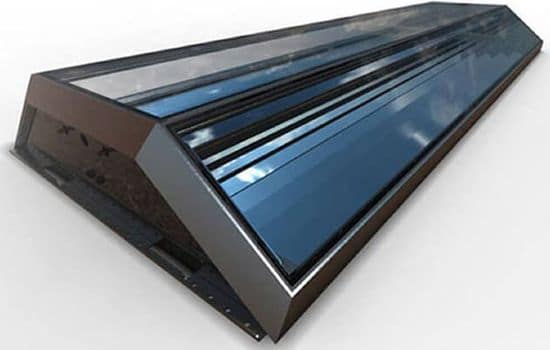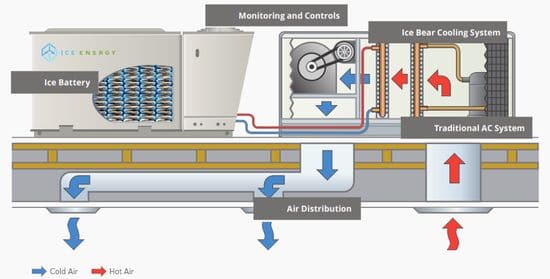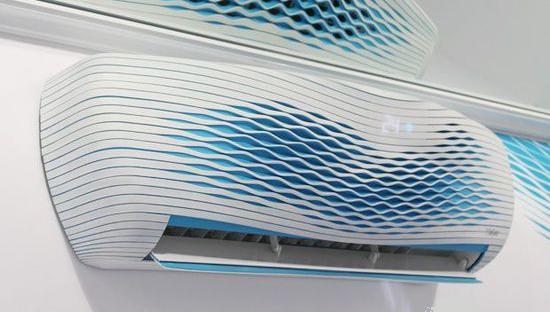As known, the competition in the consumer home appliances market is growing steadily in recent decades. As a consequence, this trend encourages companies to constantly improve the competitiveness of their devices. Of course, it directly depends on functionality, price and technical values of device. In turn, the innovative solutions significantly affect these factors, since mainly new technologies provide improvement of modern models.
Of course, this trend extends to air conditioners. Therefore, modern models use a wide range of various innovations that provide optimization of their work with the help of digital control systems, highly efficient air purification, etc. This aspect significantly affects the choice of optimal air conditioner.
Today, this segment offers several interesting innovation, including those already implemented and under development.
Motion Detection Sensor
Engineers at the University of Massachusetts have proposed using motion sensors to automatically optimize air conditioning. In fact, the control system uses the information of infrared sensor to determine the presence of people in the room. Further, the scanning provides selection of their location area. Accordingly, it minimizes the power of the air conditioner in an empty room and increases it in the presence of people. Additionally, the system redistributes the flow of cooled air in the direction of the people, driving appropriate shutters.
Of course, this algorithm significantly reduces energy consumption. Today, many companies use this technology in their models.
Moreover, the market offers Motion Detection sensors as a separate additional accessory to the air conditioner.
The video at the end shows operation of Mitsubishi Electric MSZ-LN air conditioner with infrared I See Sensor.
Inverter air conditioners
Controlling the motor using AC frequency has proven its efficiency long ago. As a consequence, companies actively offer inverter refrigerators, inverter washing machines, etc. This management method got its name from the Latin word inverto, which translates as a turn or a change. The motor control system converts the AC into DC, and then, conversely, into the AC, but with required frequency, providing control of the motor’s rotational speed.
This transformation provides a smooth adjustment of speed over a wide range, which today reaches 3000 rpm. and higher. Of course, the rotational speed directly affects the performance of the air conditioner, providing optimal cooling rate. Therefore, inverter models are more economical and efficient.
Inverter air conditioner works as follows. If necessary to reduce the temperature, the inverter controller quickly increases the speed of the compressor motor. Respectively, the conditioner provides intensive cooling the air to the required temperature indoors. Then, it reduces the rotational speed and maintains a constant temperature with high accuracy. Of course, the lack of a regular on / off compressor increases its service life, reduces energy consumption and noise levels.
Air conditioners on solar energy
The Australian Chromasun company has developed a solar-powered air conditioner.
Additionally, this system can use gas for alternative energy supply in low sunlight conditions.
Air conditioner with freezing system
The California-based Ice Energy company has developed thermal storage technology (TES).
Today, company actively offers popular Ice Bear models with this technology. At night, this device freezes the water in the tank. In the daytime, it uses the cold of the ice, providing cooling in the room. Then, after melting the ice, the system provides traditional air conditioning.
Air conditioner with Peltier element from Google
Google has filed for registration a patent for an invention of a fundamentally new type of window air-conditioning device. It has completely new design.
As is known, traditional window air conditioners have a simple design and low price. Unfortunately, they are less effective and take up part of the window opening, reducing the flow of light in the room.
The new device from Google uses the same principle that is used in Dyson or Air Multiplier fans. According to the company, this compact, inexpensive and completely silent air conditioner is tightly installed in the window and provides high efficiency without refrigerant. In particular, it uses a Smart thermostat, an unconventional installing in the window frame and Peltier effect, which provides the temperature difference in the conductor during the flow of electric current.
3D Printed air conditioner
In 2015, the largest Chinese company Haier Group introduced the air conditioner, printed using a 3D printer.
Of course, this technology radically expands the possibilities of developers in the field of design.





